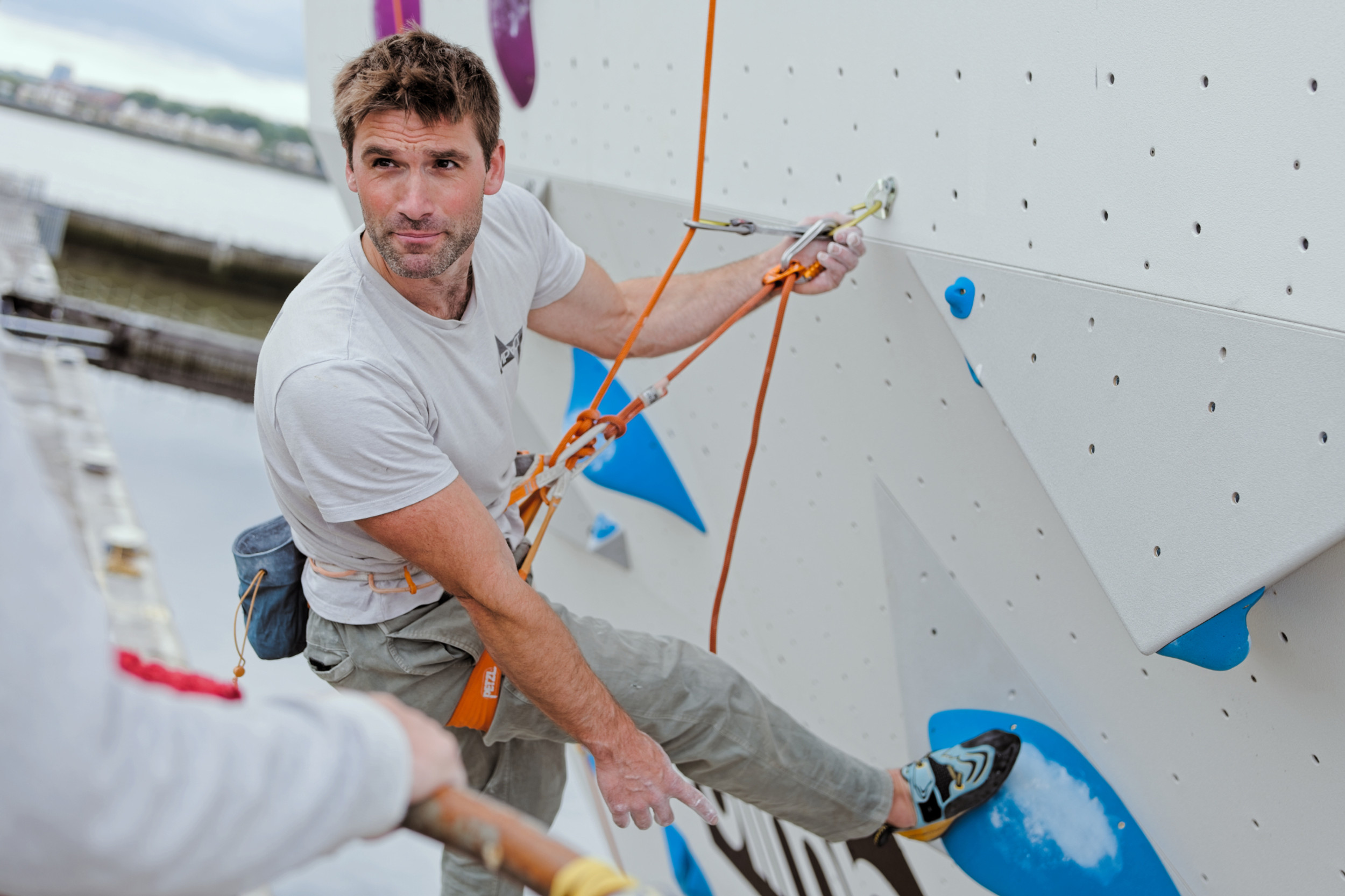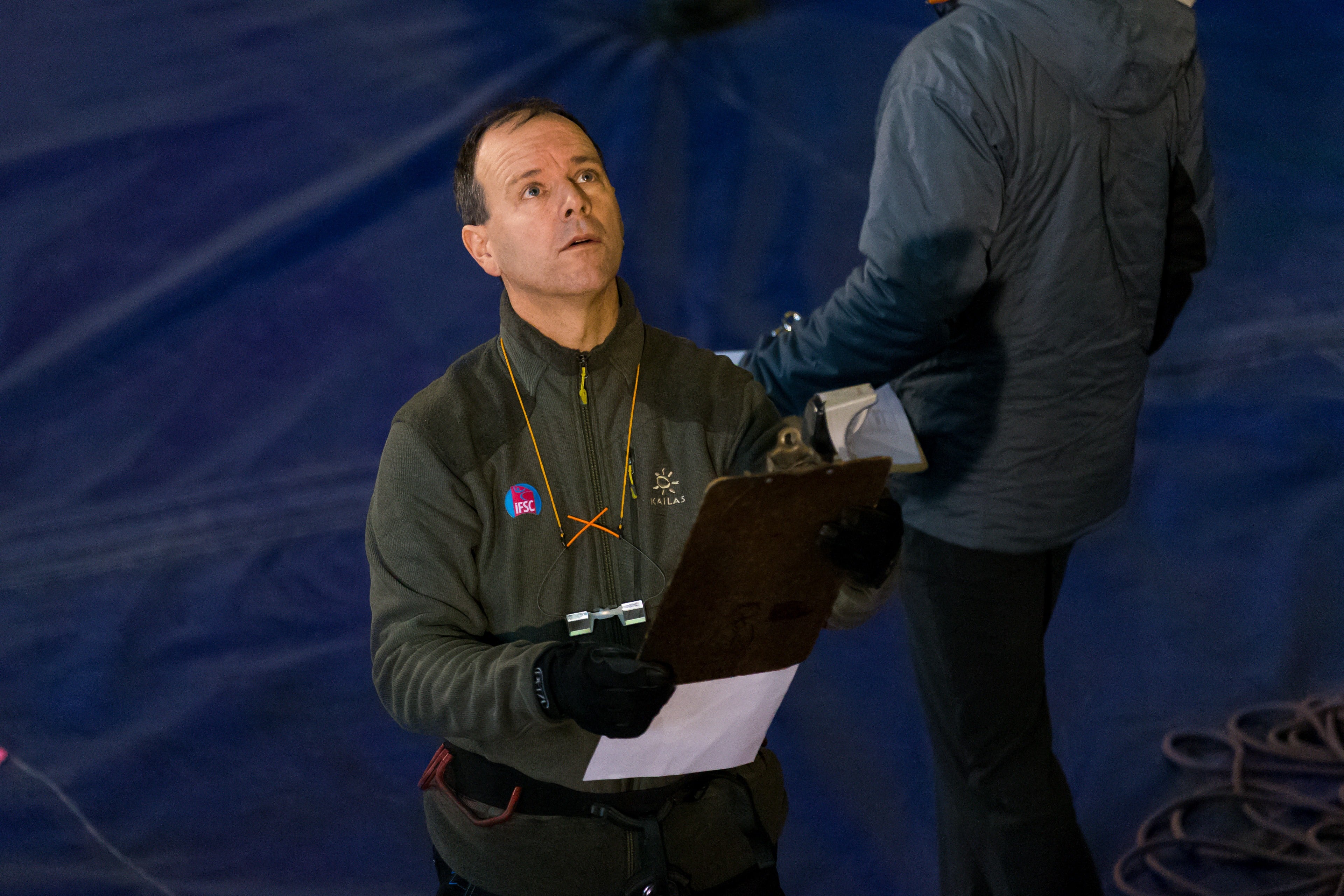Introduction
Running a climbing competition isn’t just about athletes pulling on holds and reaching for tops. Behind every successful event lies a dedicated team of route setters, officials and volunteers – the unsung heroes who make it all happen. Whether it’s local youth meets, regional series or national championships in the UK, understanding the roles of these key contributors helps everyone appreciate the event fluidity, safety and fairness.
By giving you an insider’s view of what route setters do, how officials keep the event fair and how volunteers glue everything together, this article aims to shine a light on the backbone of any climbing competition. As a bonus, having a grasp of these roles can help athletes, coaches, parents and climbing wall staff engage more effectively with events.
1. Route Setters: Crafting the Challenge

6
What do route setters do?
Route setters create the physical challenge of the competition—the boulders, lead routes, holds and volumes that climbers attempt. At an event they typically:
- design each route or problem to suit the competition format and grade range. services.thebmc.co.uk+2Planinska zveza Slovenije+2
- install holds, volumes, protection points (for lead) and finish off the wall according to safety and regulatory standards. Planinska zveza Slovenije+1
- for competitions, test and adjust the routes (often via forerunning) so the difficulty, flow and movement work as intended. FirstHand Climbing+1
- ensure the warm-up area is fit for purpose, and the competition wall meets all necessary technical and safety protocols. mountaineering.ie+1
Why their job matters
- Athlete experience: A good set challenges and excites competitors, gives the event atmosphere, tests a range of skills, and contributes to a fair contest.
- Safety: If holds are poorly placed, bolts are mis‐positioned or volumes unstable, risk increases. The setter team plays a major role in mitigating that.
- Event flow & audience appeal: Especially in televised or spectator‐friendly competitions, the aesthetic, style and pacing of climbs affect how engaging the event is.
- Fairness & grade spread: Setting too easy makes it uncompetitive; too hard and almost nobody sends. Finding the right balance is a crucial setter skill.
Key titles and responsibilities
- Chief Route Setter: Leads the setting team, plans the setting schedule, liaises with event organisers and judging teams. services.thebmc.co.uk
- Assistant/Lead Setters: Work under the Chief to implement the design, execute the build, forerun, and adjust. climbscotland.net
- Forerunners: Climbers (often part of the setter team) who test the new routes, check movement, identify flaws and feed back to setters.
How to support or engage with route setters
- As a competitor or team member: Respect the routes as they stand – avoid touching holds before official testing or preview. Treat forerunning feedback as gold.
- As an organiser or wall: Provide clear timeline, good access to holds/volumes, adequate time for testing. Encourage setters to stay on site and observe how climbers interact with the set – feedback is invaluable. Reddit
- As a volunteer: If you’re assisting route setting (hold washing, stripping old routes, etc), show you understand radials on the wall, are tidy and communicate clearly with the setting lead.
2. Officials: The Guardians of Fairness & Safety

6
Who are the officials and what do they do?
In a climbing competition you’ll typically see officials such as judges, technical officials, jury members, machine scorers, call‐zone staff, and the Jury President. Their responsibilities include:
- enforcing the competition rules (for example those set by British Mountaineering Council (BMC) and international bodies). services.thebmc.co.uk+1
- judging climbers’ attempts (whether a zone or top is achieved, correct holds used, correct number of attempts, timing, etc).
- ensuring competitor safety, and monitoring that the competition area is secure (non-competitors not interfering, correct equipment used). climbscotland.net
- coordinating with route setters (especially for technical matters—e.g., if a route is unsafe, or the forerunning indicates difficulties). mountaineering.ie
- handling appeals, monitoring isolation zones (in finals formats), maintaining documentation and reports.
Why officials are essential
- Integrity of results: Without accurate judging, the competition outcome loses credibility.
- Safety and regulation: Especially important for lead, speed, and youth competitions, ensuring equipment and procedures meet standards.
- Competitor confidence: Athletes expect consistency, clarity and fairness—good officiating supports this.
- Event reputation: A well-run event builds trust with climbers, coaches and spectators; poor officiating harms future entries and sponsors.
UK-specific notes
- The BMC emphasises that volunteers and officials must adhere to codes of conduct, valid qualifications/insurance cover, and ensure participant wellbeing is paramount. climbscotland.net
- Officials may have special accreditation/licences especially for national or international level events. services.thebmc.co.uk
Tips for organisers and participants
- Provide clear briefing for all officials (pre-event) so everyone knows the format, rules and logistics.
- Ensure communication channels between officials, organisers and route setters are smooth (so immediate issues can be dealt with, e.g., route change or appeal).
- For competitors: familiarise yourself with event rules ahead of time (start procedures, attempts, zones, finals isolation conditions) so you understand what the officials are monitoring.
- For aspiring officials: training workshops and mentoring are valuable. Getting involved even at smaller events builds experience.
3. Volunteers: The Event Engine

6
What roles do volunteers fulfil?
Volunteers are absolutely critical – from helping with registration and athlete check‐in, scrubbing holds, managing the isolation zone, taking photographs, being belayers or bottom‐rope belayers (particularly for youth events), to simply being the ‘runner’ who fetches scoresheets or handles kit. According to the BMC:
“There are a number of essential roles needed to help run the BMC climbing competitions such as judges, belayers and isolation volunteers.” thebmc.co.uk+1
Other volunteer tasks may include:
- equipment setup/pack down
- marshalling competitors between rounds
- assisting spectators and parents with information
- timing/scorekeeping tasks for speed or lead formats
- first‐aid, safety‐monitoring or welfare roles
Why volunteers are so important
- Scale of staffing: Youth climbing events often require a very high ratio of volunteers relative to competitors – one estimate notes that for 250 competitors you might need nearly 200 volunteer slots. Climbing Business Journal
- Community involvement: Many volunteers are parents, club members or coaches – this builds a sense of ownership, fun and connection within the climbing community.
- Cost‐effective delivery: Especially at grassroots or regional level, the event could not happen without a large volunteer team.
- Operational flow: Volunteers often take care of the many ‘small’ tasks that keep the event running smoothly – missing one volunteer can result in delays or safety risks.
How to engage volunteers (and how competitors/organisers should think about them)
- Organisers: Provide clear role descriptions ahead of time, training or briefing at the volunteers’ start, and logistical support (e.g., refreshments, a designated volunteer area). Adding volunteer recognition (thank yous, certificates) boosts retention.
- Competitors/coaches/parents: If you attend an event, consider volunteering in some capacity (e.g., belaying, scoring) – you’ll gain insight into how the event works and often make new connections.
- Capitalising on the opportunity: For younger climbers or club members, volunteering offers a path to learn about the competition process, possibly leading to judging or route‐setting roles in future.
- Respect the role: Recognise that volunteers are fulfilling a crucial part of the event. Waiting for a result or interruption? A polite “thanks for your help” goes a long way.
4. How All Three Roles Work Together
At a competition, the interplay between route setters, officials and volunteers must be seamless:
- Before the event: Route setters design and build the routes; volunteers help set up walls, holds and registration; officials review safety procedures and competition format.
- During the event: Officials judge each attempt; volunteers manage competitor flow, registration, and comfort; route setters may observe forerunning issues and adjust minor faults.
- After the event: Volunteers help with pack‐down; officials report results and any appeals; route setters strip the routes, compile reports, and feed lessons into the next event. services.thebmc.co.uk+1
When one link breaks (e.g., insufficient volunteers, poor communication between setters and officials), the event risks delays, inconsistency, athlete dissatisfaction or even safety incidents. Conversely, when these roles operate smoothly, athletes can focus on performance, spectators enjoy the spectacle and the climbing community builds trust in the competition system.
5. Why Understanding These Roles Matters for Your Event or Club
- Better competitor preparation: Knowing the background helps you anticipate the “why” of certain routes, the role of judging and the functions of volunteers.
- Improved club involvement: Encouraging club members or parents to volunteer builds capacity and fosters a sense of shared ownership.
- Event professionalism: For clubs or walls looking to host competitions, building a team of recognised setters, trained officials and a volunteer pool is key to delivering high‐quality events and sustainable programming.
- SEO boost for your website: By writing about these topics in this depth you’re capturing keywords like competition climbing UK, route setting competition, climbing competition volunteers, climbing officials role. These help your site become a resource for clubs, athletes and organisers.
- Community growth: As climbing continues to grow in the UK (fuelled by increased exposure via Olympic and youth competition pathways), highlighting and celebrating the roles behind the scenes helps attract more support, fosters sustainable events and builds the sport’s foundation.
6. Key Takeaways
- Route setters are designers and builders of competition climbs; their decisions directly shape the athlete experience, safety and event success.
- Officials are the guardians of fairness, safety and compliance; their work ensures the competition is credible and trustworthy.
- Volunteers are the engines that keep events running; from registration to belaying, the event simply couldn’t happen without them.
- All three roles are inter‐dependent – they must communicate, coordinate and execute together for a smooth competition.
- Whether you’re a competitor, coach, parent, club organiser or wall manager – understanding and respecting these roles will enhance your experience and contribute to better competitions.
Final Thoughts
The next time you’re at a regional climbing competition in the UK, take a moment to look beyond the climbers on the wall. Behind each ascent there’s a chain of effort: the setter who dreamt up the move, the volunteer who timed the attempt, the official who marked the result. These roles might not always be in the spotlight, but they are absolutely indispensable to the climbing competition world.
And if you’re part of your local club or wall and have ever wondered how you might get involved behind the scenes—consider volunteering, officiating or shadowing a setter. You’ll not only deepen your understanding of the sport, but you’ll be supporting the event ecosystem that helps athletes thrive.
